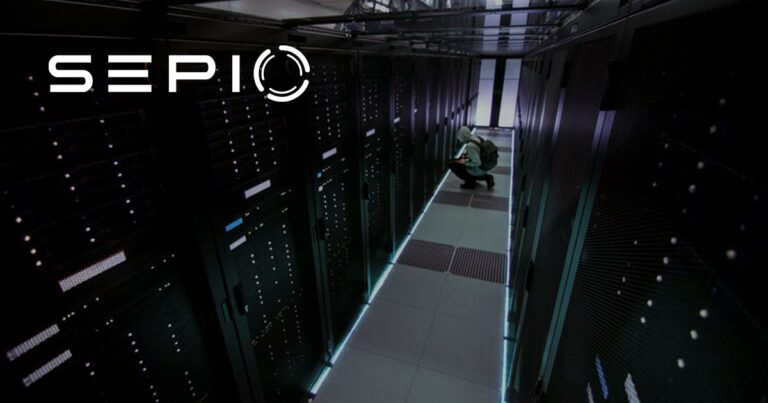With sophisticated criminals and nefarious state actors intent on stealing intellectual property or disabling critical networks, cybersecurity has become a vital concern for the Department of Defense (DoD), U.S. vendors, and the nation’s security infrastructure. The rise in risks to IT, OT, and IoT infrastructure is unprecedented. This includes threats such as hardware supply chain attacks, insider risks from both witting and unwitting employees, and an escalation of global cyber threats. Additionally, the emergence of new, more destructive attacks continues to complicate the DoD Cybersecurity Framework, requiring constant adaptation and vigilance.
As per the Government Accountability Office (GAO), establishing a comprehensive cybersecurity strategy is no longer optional; it’s a pressing need. The framework must focus on global supply chain risk mitigation, as well as addressing potential threats from malicious hardware and counterfeit devices. The stakes are high—without a robust DoD cybersecurity plan in place, not only is the DoD vulnerable, but national security as a whole is at risk.
Understanding the Threat Landscape
Threats to DoD cybersecurity are multifaceted and complex, spanning across IT, OT, and IoT environments. While traditional cybersecurity solutions may address software vulnerabilities, threats at the physical layer—such as rogue USB devices or compromised network implants—often go undetected. Attackers exploit these blind spots, gaining access to critical systems through covert devices that masquerade as legitimate hardware.
Hardware Supply Chain Attacks
One of the most insidious threats to DoD cybersecurity is the risk of hardware supply chain attacks. These occur when counterfeit or malicious hardware is introduced into the system, often without the organization’s knowledge. Such attacks can cause data breaches, system malfunctions, or even espionage. Without a comprehensive DoD Cybersecurity Framework that monitors the supply chain at all levels, these risks could result in significant damage to national defense systems.
The Insider Threat Factor
Internal actors, whether intentional or accidental, also pose a significant risk. Insider threats, stemming from employees or contractors, have become an area of growing concern. These individuals may unknowingly introduce vulnerabilities or deliberately carry out malicious activities. The DoD Cybersecurity Framework must account for these risks by implementing measures to minimize the potential damage caused by insiders.
Sepio’s Role in DoD Cybersecurity
To address these growing risks, DoD cybersecurity requires more than just traditional solutions—it needs actionable visibility and comprehensive asset management. That’s where Sepio’s platform comes in, offering a patented Cyber Physical Security solution that secures assets at the physical layer. Sepio helps to identify risks across a wide range of device types and connection points, whether it’s IT, OT, or IoT assets, and provides real-time monitoring and risk assessment to keep the DoD Cybersecurity Framework ahead of emerging threats.
Enhancing DoD Cybersecurity with Sepio’s Platform
Sepio’s platform offers several key features to strengthen the DoD Cybersecurity Framework, including:
- Visibility for IT/OT/IoT Assets: A fundamental component of DoD cybersecurity is knowing what assets are present in the environment. Sepio’s platform ensures that all IT, OT, and IoT assets are accounted for, including shadow assets that may otherwise go undetected. With this visibility, organizations can monitor and secure every connected device.
- Securing the Hardware Asset Supply Chain: Sepio’s platform is designed to validate every connected asset, ensuring that it is both trusted and verified. This ensures the integrity of the hardware supply chain, protecting against counterfeit and malicious devices.
- Mitigating Internal User Risks: Extending Zero Trust principles beyond the user level, Sepio’s platform focuses on the asset level. This ensures that even legitimate users cannot unwittingly introduce vulnerabilities through compromised devices.
- Detecting and Mitigating Spoofing Devices: Many cyber threats involve spoofing devices, which pose as legitimate hardware to evade detection. Traditional cybersecurity solutions often miss these threats, but Sepio’s platform is built to detect and neutralize spoofed devices before they cause harm.
- Identifying Manipulated HID Devices: Attackers can manipulate Human Interface Devices (HIDs), such as keyboards and mice, to impersonate legitimate hardware. Sepio’s platform detects these devices and prevents their use in executing attacks within the DoD cybersecurity environment.
Strengthening DoD Cybersecurity: Protecting Assets with Sepio
The strength of the DoD Cybersecurity Framework relies on the ability to secure assets across various environments. Sepio provides organizations with the tools necessary to:
- Discover all known and shadow assets: Visibility is crucial to maintaining a secure environment. Sepio ensures that all assets, even those that are hidden or unaccounted for, are discovered and monitored.
- Mitigate risks from uncontrolled assets: Unverified or untrusted devices present significant risks. Sepio’s platform helps to mitigate these risks, ensuring that only trusted assets are allowed within the environment.
- Reduce hardware clutter and optimize efficiency: Excess or outdated hardware can introduce vulnerabilities. By identifying and removing unnecessary devices, Sepio helps organizations reduce clutter and streamline their operations.
- Achieve a heightened security posture: With comprehensive asset visibility and risk management, organizations can significantly improve their overall cybersecurity posture, aligning with DoD cybersecurity requirements.

Why Choose Sepio for Comprehensive DoD Cybersecurity?
- Trafficless: No network dependencies, making it lightweight and non-intrusive.
- Asset Risk Factor: Sepio’s risk management is based on physical layer data, offering a more accurate view of potential threats.
- Privacy: Sepio respects data privacy, ensuring no private data is probed or collected.
- Automation: Seamless third-party integrations make deployment and management effortless.
- Quick Deployment: Sepio’s platform can be deployed in under 24 hours, ensuring fast and effective protection.
Sepio’s Endpoint and Network Cybersecurity
Sepio’s platform closes peripheral visibility gaps, especially around USB-connected devices. It provides a full asset inventory, identifying and neutralizing rogue devices. The platform uses real-time behavioral analysis to detect suspicious devices, actively blocking any legitimate-looking hardware that attackers might use for malicious purposes.
Furthermore, Sepio leverages physical layer data from network switches and WLCs to accurately assess the true identity of each asset connected to wired or wireless Ethernet networks. This capability is critical for the DoD cybersecurity framework, as it allows the identification and mitigation of high-risk assets that could otherwise go unnoticed.
Don’t wait for a breach to happen. Protect your critical IT, OT, and IoT assets with Sepio’s advanced physical layer security solutions. See how our platform can elevate your security posture and provide comprehensive visibility across your entire infrastructure.
Schedule a demo with Sepio’s experts today and discover how we can help you secure your assets from emerging threats.
Read more about ARM for DoD Cybersecurity (pdf)





